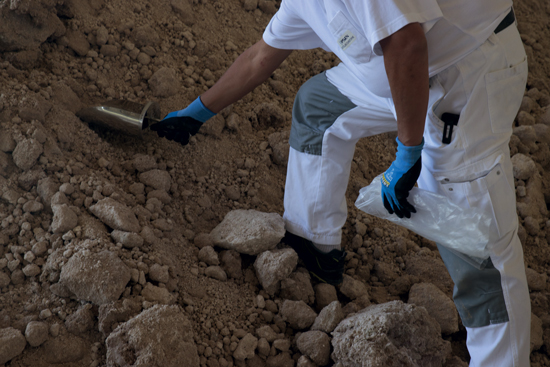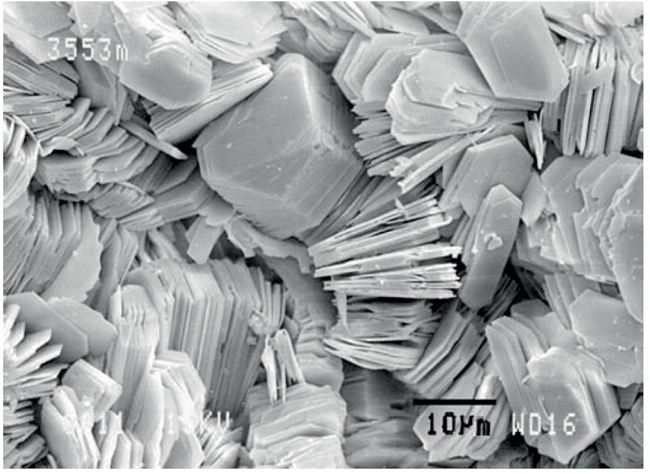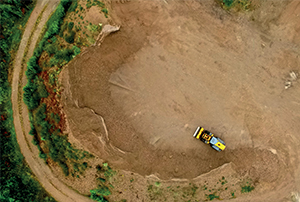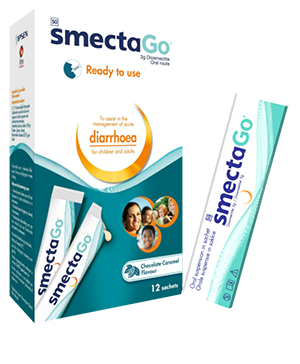Coming from the deep layers of the soil, clay is a rock with natural properties recognized and used since ancient times. It is a mine of natural benefits when selected and purified with care, while respecting the environment.

Present since the formation of the earth, clay is a rock used by man for its natural health benefits since ancient times. Recommended by the greatest doctors in the history of mankind, it has been used empirically all over the world to fight against various ailments, including digestive1. From the 20th century, the tools of science have made it possible to better understand the physico-chemical properties at play in the therapeutic action of clays.
Many properties from the diversity of nature
Clay is characterized by very fine silicate particles and its microscopic leaf structure2. However, it is now known that there is not only one clay, but many clays with different physicochemical properties, depending on the size of the particles, their shape, their arrangement or their electrochemical charge. The choice of the right clay as well as a treatment to guarantee its original properties and natural purity are crucial to achieve the desired effect safely.
Thus, the diosmectite contained in SmectaGo that we have developed has properties allowing it to bring its natural benefits on digestive well-being in different ways.
The combination of the power of nature and our scientific and technical expertise
Diosmectite is a clay of 100% natural origin with remarkable properties of adsorption and absorption as well as a covering power that together explain its properties in case of acute diarrhea.3-8

- Thanks to its extremely fine particles in the form of sheets and its cationic nature (positive electrochemical charge), it has the ability to adsorb certain substances such as gases for example.
- Its mineral composition of slat silicates allows it not to dissolve and remain suspended in water. The particles aggregate to form a protective barrier lining the inner lining of the intestine.
- Finally, it is naturally hydrophilic: it absorbs water by capillarity between its particles and within a multitude of microscopic pores that present in its structure.
Our natural respect for the environment

As nature lovers and aware of what it offers us, we consider it equally natural to respect it. Throughout the manufacturing process of our medicinal products based on therapeutic clays such as SmectaGo, we apply measures to minimize our impact on the environment and preserve its biological balance. For example, at our clay processing site in Isle-sur-la-Sorgue, the water consumed for the manufacturing process is fully treated on site and discharged into the Sorgue. We recover 99.6% of our waste and manufacturing by-products9 and the site is ISO 14001 certifie.

References :
1 : Carretero MI, Gomes CSF, Tateo F. Clays and human health. Handbook of Clay Science Developments in Clay Science 2006;Vol. 1 717, Chapter 11.5.
2 : Rautureau M, Caillère S, Hénin S. Les argiles et Santé. Éditions EMInter, Lavoisier 2010, 203 pages
3 : Clark K.J. et al., In vitro studies on the use of clay, clay minerals and charcoal to adsorb bovine rotavirus and bovine coronavirus, Veterinary Microbiology, 1998, 63 137-146.
4 : Droy-Lefaix MT, Drouet Y, Géraud G et al. La filance: nouvelle approche de l’agression intestinale et sa thérapeutique. Gastroenterol Clin Biol 1985;9(12 Pt 2):119-21.
5 : Brouillard MY et Rateau JG. Pouvoir d’adsorption de deux argiles, la smectite et le kaolin, sur les entérotoxines bactériennes. Gastroenterol Clin Biol. 1989;13:18-24
6 : Buccigrossi V, Russo C, Guarino A, et al. Mechanisms of antidiarrhoeal effects by diosmectite in human intestinal cells. Gut Pathog. 2017;9:23.
7 : Mahraoui L, Heyman M, Plique O et al. Apical effect of diosmectite on damage to the intestinal barrier induced by basal tumour necrosis factor-alpha. Gut 1997;40(3):339‐343.
8 : Dupont C, Foo JL, Garnier P, Moore N, Mathiex-Fortunet H, et al. Oral diosmectite reduces stool output and diarrhea duration in children with acute watery diarrhea. Clin Gastroenterol Hepatol 2009;7:456-462.
9 : EFPIA White Paper on Circular Economy – Juin 2020


